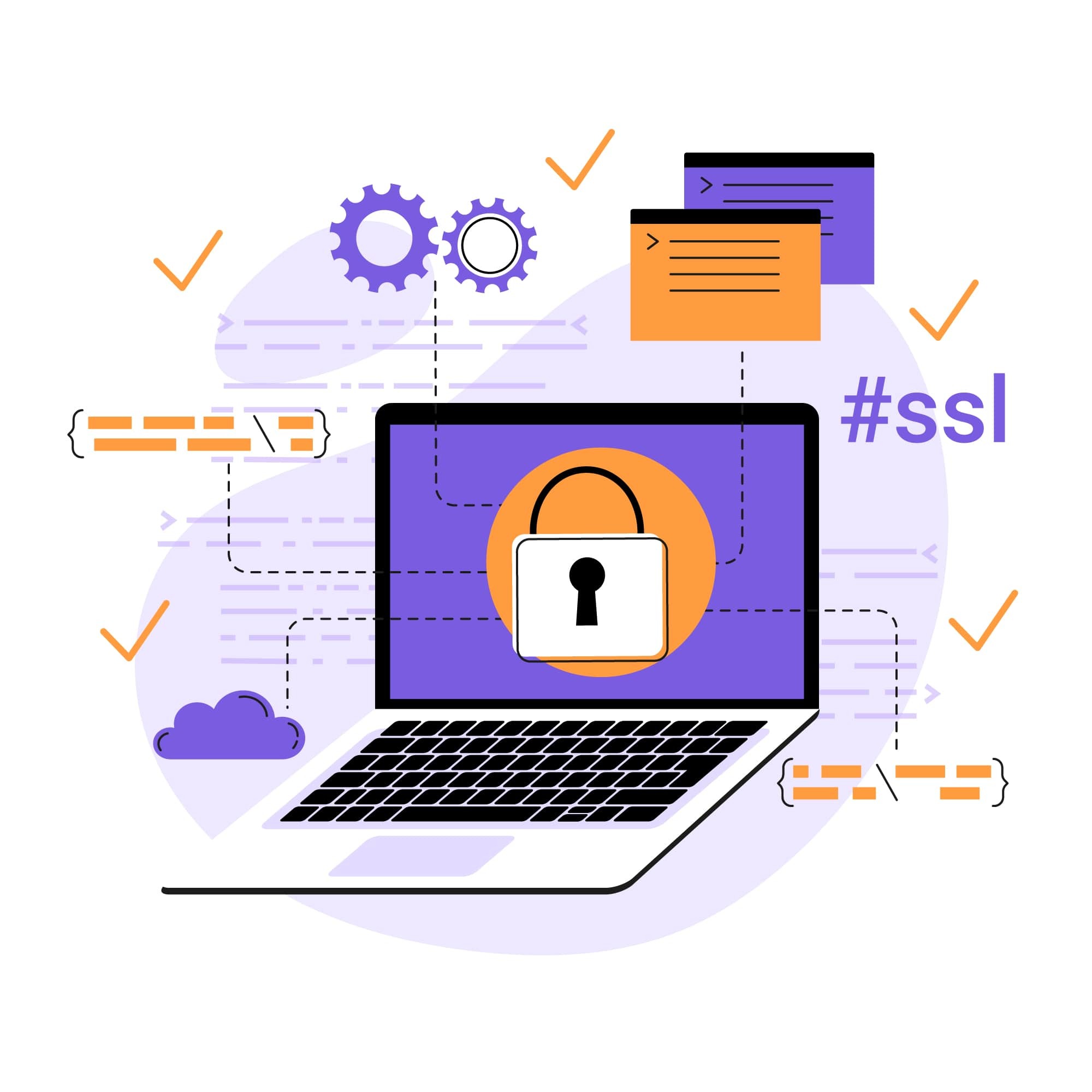
Resolving HTTP 503 Service Unavailable Errors: A Comprehensive Guide
These days, we are spoiled by fast and functional web pages that, in most cases, load exactly when and how we want. Our expectations are high, and, as such, we get even more frustrated when we encounter 500 internal service error messages, such as the all-too-familiar 503 service unavailable.
Errors within the 500 category are some of the most commonly seen Hypertext Transfer Protocol (HTTP) error codes. While they are bound to frustrate, these serve an important function: they enable the internet's version of an expedited conversation between a server and a browser. While 500 messages are the most familiar, HTTP status codes can also feature other codes that convey redirections or invalid pages.
Among the variety of HTTP response codes, some, like the 502 bad gateway or the 503 service unavailable, point to specific server-side issues. Understanding these response codes, including the temporary nature of a 503 or the gateway problems indicated by a 502, can provide clearer insights into the underlying problems affecting user experience.
Sometimes, however, valid requests simply cannot be completed by servers. This is when 500 error code messages come into play. Their specific digits provide valuable insight into why, exactly, requests are not functioning as desired.
What is an HTTP 503 Error?
Often referred to simply as 'Service Unavailable,' the HTTP error 503 code sends a simple message: at the moment, the desired website cannot be reached. This error differs considerably from other common codes (such as 501, 502, or 504) in that the website in question is almost certainly still running. Despite this, the website cannot currently be accessed — hence, the need for the 503 message to highlight and explain the delay.
Unlike some 500 codes, 503 service unavailable errors are, by nature, temporary. This reality won't stop users from feeling frustrated when they encounter these errors. While the issues that underscore 503 messages may eventually be resolved, the reputational damage and losses in profitability may not be so easy to overcome.
Common root causes
A variety of issues can contribute to 503 errors. Often, these are difficult to determine, especially as the explanation and advice in the official message tend to be vague. Often, however, one or more of these root causes play a role.
Server overload
In cases of server overloads, monitoring tools can alert administrators to potential issues before they escalate. For example, a sudden increase in HTTP response errors, such as 502 bad gateway errors or DDoS attack signs, might necessitate immediate action to redistribute load or enhance server security measures.
If the server's resources are exhausted and can no longer handle incoming requests, the 503 may serve as a temporary stand-in until the server once again becomes functional. Server overloads have many causes, with sudden (and unexpected) spikes in traffic often to blame. In select cases, server overload may be prompted by distributed denial of service (DDoS) attacks.
Server maintenance
During scheduled maintenance, servers typically shut down temporarily to undergo critical updates, including security patches from vendors like Microsoft for Windows servers, ensuring the integrity and performance of the hosting platform. This regular maintenance is crucial for the smooth operation of today's networks, aimed at minimizing future downtime. Although encountering a 503 error during these periods may be frustrating for users, it reflects a temporary and necessary measure for system improvement, often indicated by the message "server down for maintenance."
API Limitations
Sometimes, a 503 service unavailable error may arise due to API rate limiting, especially when a web application makes too many requests to a third-party service. This highlights the importance of efficient API usage and management within applications, particularly for those running on platforms like Windows, where integration with various services is common.
Coding errors
On occasion, coding issues within the .htaccess file may prompt HTTP errors, although this is more commonly attributed to the 500 internal server error message. Still, coding is worth looking into when the other causes on this list do not appear to be relevant.
DNS issues
If the 503 error is not, as its name indicates, strictly temporary — but rather, quickly becomes a regular problem — problematic Domain Name System (DNS) configurations could be to blame. The DNS is responsible for converting the website address to a related IP address. If the DNS is unable to carry out this function, service may be rendered unavailable.
Database connectivity problems
If files on the web server are unable to connect to those on the database server, a 503 error is likely. This can happen when the credentials from the config file are incorrect — or because the hostname isn't working at the moment. The database could even be corrupted, perhaps due to a faulty plugin.
Troubleshooting 503 errors
Today's internet users find 503 errors incredibly frustrating. If they encounter these messages while attempting to visit your website, they likely will not feel like waiting around for your page to come back online. As such, comprehensive preventative measures are crucial — and when, despite this, errors do arise, they must be resolved quickly. Start with these essential troubleshooting strategies:
Check server maintenance status
503 service unavailable error codes may be simply the result of routine server-side maintenance. If this is the case, there’s only one option available: to wait it out until the hosting provider has completed all of the necessary server maintenance tasks. Think of this as an unfortunate necessity in your quest to keep your website running optimally.
Stop running processes
Web servers can become overwhelmed if too many processes occur at once, as this cripples bandwidth and may lead to an outage. In this situation, the best workaround is to terminate every process. This should give the server a retry at handling all the processes that are sent its way.
Review server and application logs
Reviewing server and application logs is crucial for diagnosing issues leading to a 503 error. These logs often contain error messages, response codes, and other clues. For instance, a spike in 503 errors immediately after a deployment might suggest an issue with the latest codebase or HTML rendering issues.
The best way to get an idea as to the root cause of error code messages such as 503 service unavailable? Take a closer look at the server-side logs. Examine the server logs for specific error messages, such as 'gateway timeout' or specific HTTP response codes, which can provide clues about the issue. Look for patterns that might indicate a problematic API call, an issue with the SSL configuration, or Chrome users experiencing a higher rate of 503 errors due to browser-specific headers. These keep track of the web browsers and servers being used to access your site. As such, they can be very useful in troubleshooting potential fixes.
Check code for bugs and recent file modifications
Server configuration is no easy task, and sometimes, even the best minds in web hosting and IT slip up. Take a broad view of the code and see if anything peculiar stands out. A great place to start? Examining any files that have recently been modified.
Investigate database issues
While the task of scouring the database for server-side errors seems like a daunting step-by-step process, there are plenty of tools available to make this job easier. WordPress, for example, features a built-in debug utility that can easily scan the database for problems. Other scanning solutions can go a step further, providing high-level insight and, ultimately, peace of mind.
Reboot server and networking equipment
From cable modems and routers to sophisticated networking servers, sometimes the answer is as simple as a reboot. This will establish a firm re-connection in the server chain between client-side web browsers and server-side hardware.
Check DNS configuration
As we've discussed, DNS issues are often responsible for the sudden appearance of the 503 service unavailable error. This happens if a server is unresponsive or if IP addresses are unresolved. Flushing DNS files and starting fresh could lead to a positive outcome.
Prevention and maintenance
Many of the issues that lead to 503 errors are entirely preventable. With a layered strategy that incorporates monitoring and security solutions, you can keep 503 errors and other 500 messages to a minimum. Start by implementing these essential strategies:
Monitor server performance
Awareness is the first step to resolving 503 issues. If you don't know when or how server issues happen, you will struggle to implement sufficiently impactful strategies. Hence, the need for monitoring. This will ensure that you are instantly aware of spikes in traffic or other concerns indicative of possible 503 errors.
Perform routine maintenance
The main goal of 503 prevention is not necessarily to keep these errors from ever occurring, but rather, to manage them so that they only arise when they prompt minimal damage. At some point, after all, they will be necessary, as servers will need to undergo maintenance. If this is performed on a routine basis, however, larger issues that lead to extended downtime are a lot less likely.
Use a web application firewall
A web application firewall (WAF) is non-negotiable for modern website security. WAFs monitor and filter traffic as it travels to the web application. This can be a powerful source of protection against a wide variety of cyberattacks, which could otherwise prompt server overloads or other issues associated with 503 errors.
Scan for malware regularly
Malware is an often overlooked source of server overloading. Worms and viruses can lead to unexpected and deeply harmful traffic spikes, which, in turn, disrupt operations and cause a whole host of other issues. Malware scanning ensures that infections are caught and dealt with promptly. At a minimum, malware scans should take place daily to ensure that you spot attacks before they cause maximum damage.
Upgrade server capacity
With overloaded servers at the heart of many 503 service unavailable errors, the simplest and most straightforward solution is to improve server capacity. This will help you overcome sudden traffic spikes, especially if your business typically sees dramatic seasonal changes in demand. Improved server capacity cannot be expected to block all 503 issues, but it should provide a strong baseline to reduce the frequency of service issues.
Try a content delivery network
Content delivery networks (CDNs) distribute servers geographically to place content closer to actual users. This, in turn, boosts performance by decreasing server load. CDNs are also favored because they reduce your network's vulnerability to a variety of cyberattacks.
Consider load balancing
Do you consistently find that specific resources are overloaded? It's possible that you need to add load balancing to the mix. This popular solution places network traffic across several servers — often referred to as a server farm. The load balancer is responsible for routing requests to the servers most capable of fulfilling them. This improves performance across the entire network and can also prevent the overloads that so frequently lead to 503 errors.
Protect your website with SiteLock
Understanding the nuances of HTTP response codes, from 503 service unavailable to 502 bad gateway errors, equips website administrators with the knowledge to improve their sites' reliability and user experience. SiteLock’s solutions offer an essential layer of protection, but a proactive approach to server maintenance, API management, and security can minimize the occurrence of these errors.
As you implement a comprehensive security strategy, don't assume you need to handle everything on your own. A little guidance can make a world of difference for your website and your users. SiteLock is happy to help; we offer a variety of plans that encompass everything from malware detection and removal to website backups, DDoS protection, and more.
Not sure which plan is right for you? Take a close look at our solutions to get a better sense of how we can strengthen your security protocol and make your website both easy and enjoyable to navigate. Contact us today for more information.





